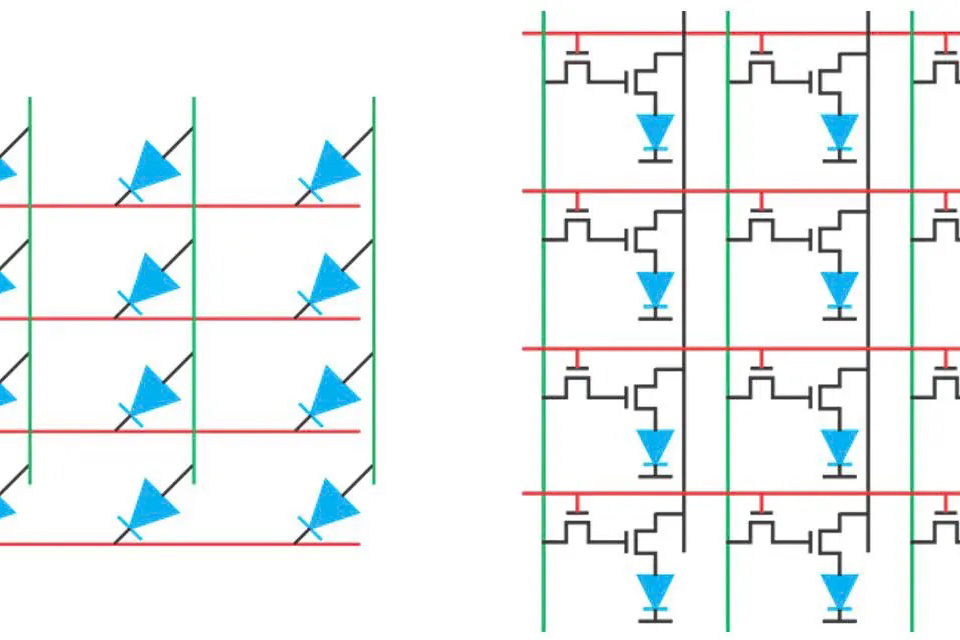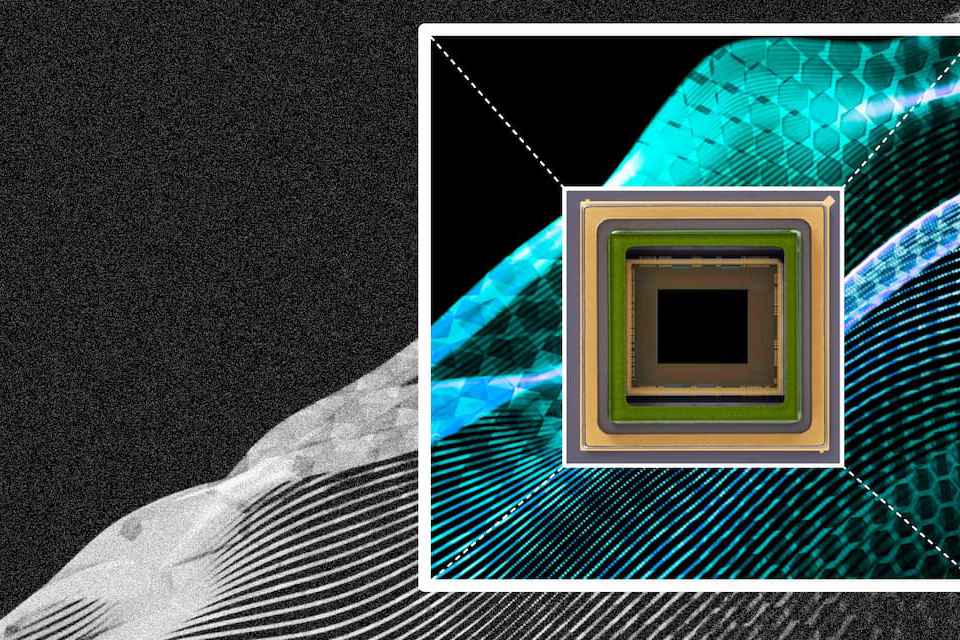This article explores the fascinating world of OLED microdisplays, their crucial role in augmented reality (AR), virtual reality (VR), and electronic viewfinders (EVF), and how companies like Sony are leading the way in this technology. We'll delve into the technical aspects, benefits, and diverse applications, revealing why OLED microdisplays are the future of display technology. If you're interested in the next generation of visual experiences, this deep dive is a must-read.
OLED, or Organic Light Emitting Diode, technology is known for its vibrant colors, high contrast ratios, and wide viewing angles. However, OLED microdisplays represent a specialized application of this technology. While a traditional OLED is built on a glass or flexible plastic substrate, an oled microdisplay uses a silicon backplane. This distinction is crucial because it allows for incredibly small size displays with very high pixel density, far exceeding that of conventional oled panels. Think of it as a standard OLED being built on a wafer rather than a large pane. This difference in construction enables microdisplays to be much more compact and achieve significantly higher resolution in a tiny form factor. Microdisplays, in general, are designed for near-to-eye applications, while standard OLEDs are designed for larger viewing distances.
Standard oled displays, such as those found in televisions and smartphones, rely on a different production process and are optimized for a balance of size, cost, and performance. They have relatively larger pixels and lower pixel densities compared to oled microdisplays. The backplane technology and materials differ significantly in this context. For instance, a typical mobile phone oled panel module has a much larger surface area and lower pixel density than an equivalent-resolution oled microdisplay. This difference in approach explains why oled microdisplays are suitable for head-mounted devices and other specialized uses, whereas standard OLED screens are suitable for general-purpose displays.

Augmented reality (AR) experiences require high image quality and displays that are virtually transparent and unobtrusive. Oled microdisplays are uniquely positioned to meet these demands. Their ability to deliver very high luminance and high contrast from a tiny microdisplay makes them ideally suited for ar glasses and the metaverse. These displays project the digital world over the real world so that users can see both in a seamless manner. This seamless overlay is only possible with tiny, efficient micro displays that do not block the user’s view of the real world.
However, implementing oled microdisplays in ar devices comes with challenges. For one, these ar glasses and the metaverse require high-quality image display that are bright enough to be visible in daylight, and yet consume low power. Managing both high brightness and low power in a very small package is a significant engineering hurdle. Furthermore, achieving a wide field of view and proper focusing optics in compact ar systems demands precise integration. The system must be extremely light weight and comfortable for prolonged use, and the display solution needs to be both robust and dependable. This makes manufacturing processes for ar microdisplays very challenging.
The immersive nature of virtual reality (VR) hinges heavily on the display quality, and oled microdisplays play a vital role here. Traditional lcd displays can suffer from issues like motion blur and poor contrast, which can detract from the sense of realism in vr experiences. In contrast, oled microdisplays offer a much faster refresh rate and fast response, almost eliminating motion blur. This makes movements in virtual reality (VR) appear much more smooth and natural, increasing the realism. The deep blacks and high contrast delivered by oled technology create a more immersive visual experience. Furthermore, the vibrant color gamut of oled ensures that the virtual reality worlds are rich in detail and color.
Another crucial factor is the high resolution achievable with oled microdisplays. The closer the display to the user’s eyes, the more pronounced the individual pixels can become. Oled microdisplays allow for a very high-resolution solution within a very small form factor, removing the “screen door effect” often found in lower-resolution vr displays. This allows for a more natural and seamless visual environment that is easier for the user to accept and that does not distract from the virtual reality experience. Furthermore, the compact nature of these displays allows the designers to create lighter, more comfortable vr headset devices.

Electronic Viewfinders (EVF) in consumer cameras have increasingly moved away from optical viewfinders and toward electronic viewfinders in order to offer more features to the user. Oled microdisplays offer significant advantages over older lcd based electronic view finders. The superior image definition, high contrast, and vibrant colors make them ideal for a crisp, clear view of the scene being captured. Unlike optical finders, they can show the user important additional information without adding extra bulk to the consumer cameras.
An evf using an oled microdisplay offers real-time previews with accurate color representation and depth of field. This is especially useful in low-light situations where it's difficult to discern details using an optical viewfinder. The fast response of oled microdisplays also means that there is no noticeable lag, which is critical for tracking fast-moving subjects. By using micro-sized displays in both industrial, broadcasting and consumer cameras, the oled microdisplay technology is becoming increasingly popular in the consumer camera industry. This is why more and more modern digital camera manufacturers are utilizing this technology in their top of the line devices.
The power of oled microdisplays lies in several key technical features. Firstly, they are based on oled technology, known for their high efficiency, ability to emit light themselves, meaning they don't require backlighting, and thus can achieve true blacks and high contrast ratios. Additionally, they can be made on a silicon backplane rather than a traditional glass or plastic substrate. This allows for a smaller pixel pitch, meaning much high resolution in a very small area. These technologies, together, enable the production of displays that exhibit high brightness, very fast switching speed, and low power consumption.
Another crucial aspect is the ability of oled microdisplays to achieve very high luminance, which is particularly important for applications such as augmented reality, where displays need to be visible even in bright ambient light. The combination of high luminance and high contrast makes for extremely clear and detailed images. Furthermore, the use of single crystal silicon as the substrate enables very precise control over the individual pixels, contributing to the overall performance. These precise microdisplays enable new technology, like the electronic view finder, which is only possible with these tiny, efficient displays.
Sony has established itself as a prominent leader in oled microdisplay technology through their ongoing innovations in materials science and display manufacturing. Sony Semiconductor Solutions Group has been at the forefront of developing high-resolution, high brightness, and low power consumption oled microdisplays. They offer a range of products optimized for different applications, such as vr, ar, and evf. Sony Semiconductor Solutions have managed to master the production of oled microdisplays, making them a trusted and respected brand within the industry. Their decades of expertise in imaging technology has led to the creation of oled microdisplays that are unmatched in terms of quality and performance.
Sony's oled microdisplays are known for their exceptional color accuracy, smooth images and fast response time. Sony was among the first companies to produce commercially viable oled products, and they have continued to drive research and development in this space. Their expertise in silicon and materials science has enabled them to create highly efficient and extremely reliable microdisplays. Sony is a significant producer of these micro-sized displays, and are used in many applications using micro-sized displays.

Using Sony’s oled microdisplays offers numerous benefits. First, their commitment to high image quality ensures an immersive and visually accurate user experience. Their microdisplays are engineered for high-resolution capabilities, allowing for crisp, clear images in a very small package. The high luminance and high contrast provided by oled technology ensures great visibility in various lighting conditions. Furthermore, they offer a fast response, crucial for real-time ar and vr applications, minimizing motion blur.
Another major advantage is low power consumption, extending battery life in head-mounted devices. Sony's microdisplays are designed for easy integration into oem products, with flexible interface options such as serial mini-lvds or lvds. The compact size and light weight of their products make them particularly suitable for the design of ergonomic ar and vr headset devices. Additionally, the robust design of the panel module means it can handle the demands of daily use. Sony's dedication to quality and innovation has made their oled microdisplays a preferred choice for many manufacturers.
While oled microdisplays are prominently used in ar and vr, their application extends into several other fields. Their compact size and high image quality make them ideal for medical headset displays for surgery support and as displays. In this context, they provide surgeons with high-resolution images and enhanced visibility during delicate procedures. The headset displays for surgery support enables surgeons to perform minimally invasive surgeries with enhanced precision. They are also employed in industrial microscopes and other professional devices that require high-quality visual displays.
Additionally, oled microdisplays are used in displays for assistive auxiliary glasses, for the vision-impaired to enhance their visual experience. They are also becoming increasingly prevalent in professional devices that require high-quality and small screens. Their ability to deliver a clear, bright, and detailed image makes them useful in a wide range of applications. This is why oled microdisplays are gaining widespread interest from many industries. Oled microdisplay allows the creation of smaller, more efficient, and higher-performing devices.
The future of oled microdisplay technology is bright, with continued advancements expected to drive further growth and adoption. It is expected to expand significantly in areas such as ar glasses and the metaverse, where the demand for efficient, high-performance, and small video displays will grow rapidly. The development of more efficient light-emitting materials and advanced backplane technology will allow for higher luminance and even lower power consumption. Ar adoption may be one of the primary drivers of growth in this field.
Further innovations, such as a smaller pixel pitch, will pave the way for even higher-resolution displays, enabling more detailed and immersive experiences. It is also anticipated that oled microdisplays will become more integrated into daily life. They are likely to play a pivotal role in the development of more advanced consumer ar glasses, which will require displays that can be easily integrated and can deliver a truly seamless visual experience. The ability of these microdisplays to create greater visual impact in 3d head-mounted devices will drive innovation in these areas. The oled microdisplays will also see increase in other areas, and are suitable for many new technology sectors.
Companies like Framos play a crucial role in making oled microdisplay technology more accessible and easier to implement in various applications. Framos specializes in providing solutions for integrating imaging and display technologies into custom devices. They offer expertise in selecting appropriate components and handling the technical challenges associated with their use. This simplifies and expedites the integration of oled microdisplays in oem devices. Their engineering knowledge, combined with the sony microdisplays, is a great combination.
They assist companies throughout the entire process, from choosing the right microdisplay solution to designing the electrical interfaces and supporting the optical design. This level of support is crucial for companies that wish to integrate the microdisplays, but that lack internal experience. Framos help designers to properly utilize and configure oled microdisplays to achieve optimal performance. The oled microdisplay allows designers to create more complex and capable devices that can deliver truly immersive and seamless visual experiences. They are a major force in the continued innovation and application of oled microdisplay technology.
| Feature | OLED Microdisplay | Regular OLED |
|---|---|---|
| Substrate | Silicon | Glass/Plastic |
| Size | Very Small | Larger |
| Pixel Density | Very High | Lower |
| Typical Use | Near-to-eye applications | General-purpose displays |
| Resolution | Very High | Lower |
| Power Consumption | Low | Moderate |
| Luminance | High | Moderate |
| Contrast | High | High |
| Response Time | Fast | Slower |
| Feature | Sony OLED Microdisplay |
|---|---|
| Image Quality | High |
| Resolution | High |
| Luminance | High |
| Contrast | High |
| Response Time | Fast |
| Power Consumption | Low |
| Integration | Easy, OEM |
| Interfaces | Flexible, LVDS, Mini LVDS |
| Size and Weight | Compact, Lightweight |
OLED Microdisplays are specialized displays built on a silicon substrate, allowing for very high pixel density and small size.
They are crucial for ar, where their high brightness and low power are essential for creating seamless overlays.
Oled microdisplays provide an enhanced sense of immersion in vr, thanks to their fast response, high contrast, and high resolution.
In evf, they offer a crisp, clear preview with real-time information and accurate color representation.
Key technical features include high luminance, high contrast, a silicon backplane, and low power.
Sony is a leader in oled microdisplay technology, offering reliable and high-performance solutions.
The benefits of using Sony's oled microdisplays include high image quality, low power, and ease of integration.
Applications extend beyond ar and vr, and include medical headset displays for surgery, and industrial microscopes and other professional devices.
The technology is continuously evolving, with expectations for future growth in areas like ar and other new applications.
Companies like Framos help to implement oled microdisplay solutions.
Contact: Ashley Wu
Phone: +86 17773983073
E-mail: [email protected]
Add: 708 Room A Buiding Huafeng International Robot Industrial Park Xixiang Bao'an